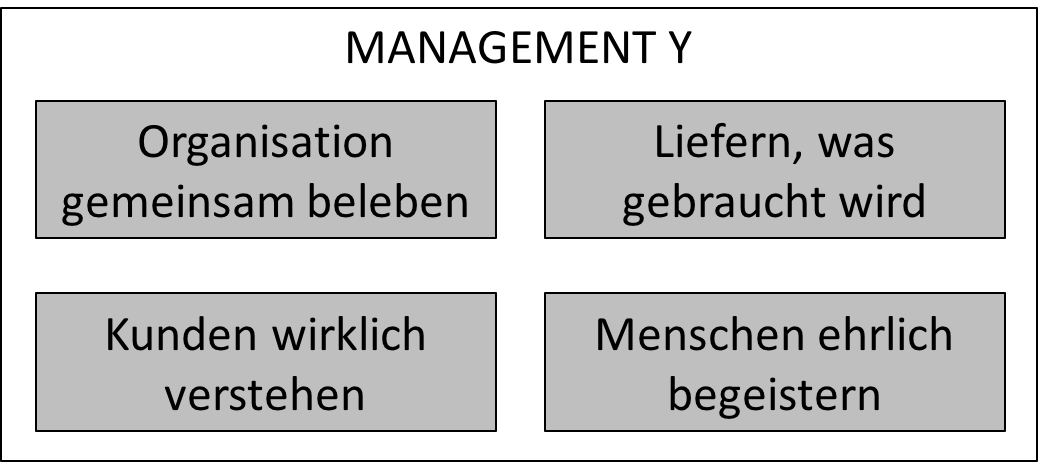More quickly! More quickly! More quickly! The world is turning faster and faster. Doesn’t that seem like that to you too? More and more projects and emails have to be processed every day and all of this in parallel. According to many authors, there is a clear problem here between external and internal requirements of the company. According to Brandes et al. the concept of sociocracy. What this means, I already have in explained another article. From this framework, the authors Brandes et al. the framework “Management Y”.
More humanity in management
According to the authors, successful organizations display a mature and humane culture. A paradigm shift from management X to management Y is taking place. Management Y serves the employee. People are not lazy, they are ready to make good contributions to something big. Living Management Y fundamentally changes our image of man from authority to serving management. Brandes et al. see the management of an organization as critical success factors and demand: “ Human maturity in key positions in the organization as a success factor for future viability “.

Organizations as social systems

Let’s take a look at the overall concept. “Bringing organizations to life together” is what the authors say and calling for a different understanding of organizations in order to shape, control and “revive” them. The authors put forward the thesis: “Leadership as a host” in an organization. We also see the Scrum approaches and the honest enthusiasm of employees. I like to compare this approach to sociocracy. Generation Y, to which I also belonged, needs incentives, i.e. meaning in everything they do. Companies must therefore honestly inspire employees through creating meaning and the defined purpose of the company. What I particularly like at the end of the book is that the authors are open and say: “Every organization can be attractive and sustainable”. I agree with the authors here and no matter which one Framework for agility You use: All seem to lead to success in their own way. Also read the articles about Holocracy and Democracy in Business . So there is still plenty of room for further research into how each of these frameworks can actually be implemented and what type of company it is suitable for.
[werbung] Verwendete Quellen anzeigen
Brandes, U., Gemmer, P., Koschek, H., & Schältken, L. (2014). Management Y . Munich: Campus Verlag.



